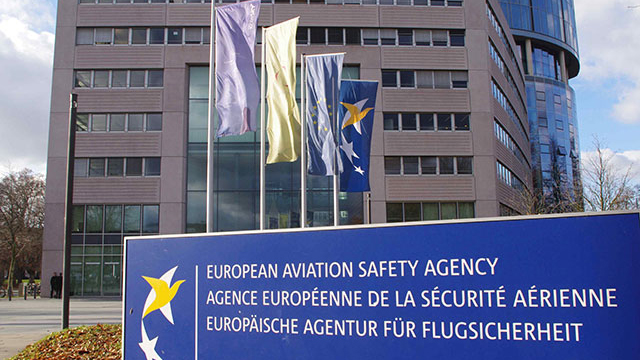
EASA Leads with Safety Regulations to Prevent Loss of Control In-flight
European Union Aviation Safety Agency (EASA) officially acknowledged the critical importance of Upset Prevention and Recovery Training (UPRT) in 2016 when it fast-tracked its response to the new ICAO Manual on Aeroplane Upset Prevention and Recovery Training, ICAO Doc 10011. Since then EASA has been taking further steps to advance safety through UPRT to mitigate Loss of Control In-flight (LOC-I), the number one cause of aviation-related fatalities. Most recently, on June 29, 2019, EASA published its Opinion 06/2017 addressing training to mitigate the threat of LOC-I. This guidance is significant in that it requires the establishment of on-aircraft Upset Prevention and Recovery Training (UPRT) in Europe.
The newly developed Advanced UPRT Course, is mandated as an addendum to Airline Transport Pilot License (ATPL) training courses. It also serves as a prerequisite prior to commencing the first type rating course in EASA multi-pilot operations. The new EASA regulations exceed that of any other National Aviation Authority (NAA) related to on-aircraft UPRT. While this new requirement is a significant step forward in combating LOC-I, critical features of robust UPRT that consistently develop resilience, transferability, and effectiveness are needed before the industry will see a noticeable downward trend in the number of fatalities related to Loss of Control In-flight. With that said, EASA UPRT is a good start and likely the best NAA’s worldwide will be able to do.
For the foreseeable future, existing UPRT providers generally don’t understand the missing critical elements of the EASA UPRT program yet it will ultimately be up to them to do more than the regulatory minimum to effect a change in safety. Robust UPRT, beyond the EASA minimum training elements, can impact safety in a significant way concerning LOC-I mitigation that will impact the statistics and truly save lives. Fortunately, it’s not about adding more time. Unfortunately, UPRT providers, in general, are scrambling to simply meet the EASA guidance which, in most cases, is already beyond their experience and expertise to implement effectively.
How Does EASA Define UPRT?
The Advanced UPRT course in Europe is seen as an important step towards enhancing a commercial pilot’s resilience to the psychological and physiological aspects often associated with upset conditions. The required Advanced UPRT course must include at least 5 hours of theoretical academic instruction as well as at least 3 hours of dual flight instruction in an airplane. The original designers of the EASA solution intended for the 3 hours to be in delivery of actual UPRT in the training area, not block time. 3 hours in the training area is enough. Based on APS’s three decades of UPRT experience delivering UPRT, 3 hours of block time is unacceptably low to deliver effective UPRT that will make a difference in safety.
The good news is that EASA guidance concurs with the ICAO and FAA position that properly trained and qualified UPRT instructors form the foundation of any safe and effective UPRT program.
Are EASA’s Requirements Effective?
That depends. While EASA member airlines are now obligated to adopt a UPRT program that complies with the guidelines set forth by EASA, the guidelines offer significant latitude in the structure, components, and instructor qualifications of a UPRT program. The new EASA guidelines are a step in the right direction, but they still lack specific criteria to help airlines smoothly implement a comprehensive training program.
Adherence to proven best practices is critical for UPRT that accomplishes lasting, resilient skills that are effective for overcoming LOC-I while avoiding negative training. In addition, there are many pitfalls that can be costly in time, money, and even lives if UPRT programs are implemented inefficiently and lack the components necessary for effective training.
What Are the Proven Best Practices for Effective UPRT?
Comprehensive UPRT incorporates a number of training elements, each of which can affect the desired outcome of training. Recently, APS released the Every Pilot In Control Solution Standard™ (EPIC-S2™) for effective upset training, a framework presenting the Six Critical Implementation Factors for Effective UPRT. The first outline of effective UPRT best practices of its kind, EPIC-S2 outlines the key elements of lasting UPRT, and an expanded guide listing the requirements for meeting best practice standards is available to UPRT providers wanting to ensure their training program follows these best practices to ensure safe, lasting skill development for pilots.




Comments: